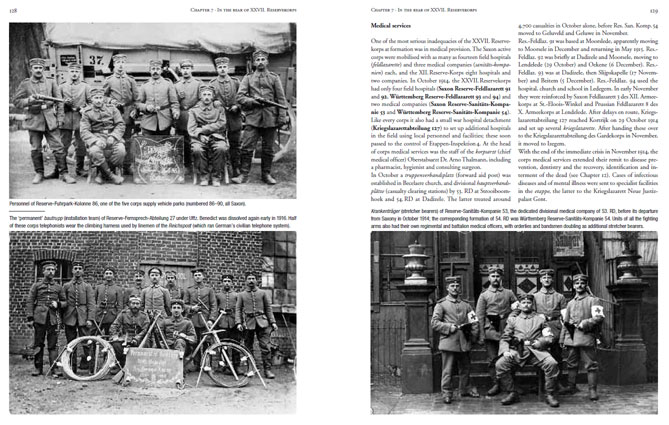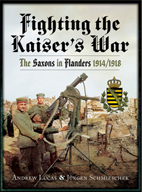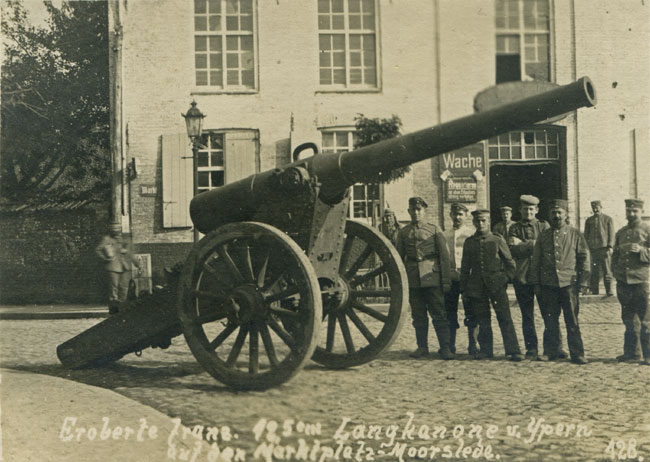CHAPTER 7 covers the units, facilities and populace of the XXVII. Reservekorps rear area, 1914-1916. The chapter draws on archived corps orders of the day, unit histories and veterans' accounts to introduce the reader to the underappreciated rear area units of the corps, the life led by its combat units when out of the line, and the Flemish population which was obliged to host them.
Units described and depicted in this chapter include:
- Generalkommando (corps HQ)
- Feldgendarmerie (military police)
- Fernsprech-Abteilung (telephonists)
- Feldschlachterei and Bäckerei (butchers and bakers)
- Munitions-Kolonnen (ammunition columns)
- Fuhrpark-Kolonnen (supply park columns)
- Rear-area Kommandos (working parties) and workshops of combat units
The chapter naturally includes a full description of the medical facilities in the corps sector and the various units which operated them.
It also features an illustrated personal account by the Saxon Ortskommandant (town major) of Waterdamhoek, describing his duties and interactions with various other units with considerable wit and colour.
Above: As the caption states, this is the marketplace in Moorslede - a rear-area hub of 53. Reserve-Division up until the reorganisation of the corps front following the shortening of its line as a result of the Second Battle of Ypres (from that point on, only one of the two divisions held the entire corps front at a time). The gun in the foreground is a captured French Canon de 120mm L Mle 1878 de Bange, an obsolete weapon which (like its equivalents in other armies, including the German) was pressed back into active service during the war. Note the signboard on the Ortswache in the background, stating that 'requisitioning without a permit is strictly forbidden'.
Above: This very recently unearthed photo provides a clearer view of the same non-standard (presumably commandeered) ambulance of Reserve-Feldlazarett 92 which can also be seen on p.131 of 'For King and Kaiser', where it is shown standing by to load casualties for transport to Izegem station in late March 1915. Reserve-Feldlazarett 92 was one of the four corps field hospitals, and was based briefly at Dadizele and Moorsele, before moving to Lendelede on 29th October 1914 and finally settling in for the long term at Oekene near Izegem from 6th December 1914.
Note the driver's Pickelhaube and Saxon-pattern artillery sabre, part of the standard uniform of the Saxon Train (supply service) but rarely seen when going about their typically non-martial duties behind the front.
Above: This is one of the small sub-units for which we had no photographic evidence at the time of publication - the Kavallerie-Stabswache at corps headquarters in Dadizele.
This party of permanently assigned HQ guards (seen celebrating Christmas 1915 with their Flemish host) can easily be distinguished from the divisional cavalry detachments of XXVII.RK by their uniforms. The men of Reserve-Kavallerie-Abteilung 53 (53. RD) were uniformed as Saxon uhlans, while Reserve-Kavallerie-Abteilung 54 (54.RD) was a Württemberg formation and must therefore have worn uhlan or dragoon uniform. These cavalrymen however are drawn from one of the Saxon hussar regiments and (in one case) from the Kgl. Sächs. Karabiner-Regiment (2. schweres Regiment).

Above: Sample pages from For King and Kaiser (chapter 7).








